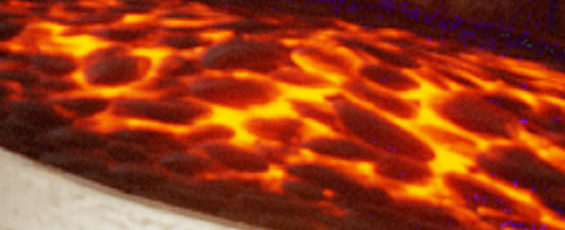|
Oodle Texture is a new technology we've developed at RAD Game Tools which promises to dramatically shrink game sizes, reducing what you need to download and store on disk, and speeding up load times even more. Oodle Texture is specialized for what are called "block compressed textures". These are a form of compressed image data that is used by GPUs to provide the rendering attributes for surfaces in games. Oodle Texture works on BC1-BC7 textures, sometimes called "BCN textures". The BC1-7 are seven slightly different GPU formats for different bit depths and content types, and most games use a mix of different BCN formats for their textures. There are normal non-RDO encoders which are very good maximum quality encoders, along with a RDO (Rate-Distortion-Optimization) which can allow your textures to compress further with an additional compressor such as Oodle Kraken or Zip while still maintaining extremely high quality. In this post, I want to primarily cover the BC6H quality of our non-RDO maximum quality encoders compared to a commonly used alternative. First though, what is BC6H? BC6H is a 3-channel (RGB) half-float texture format. It turns out that BC6H is the same size as BC7, even though BC7 compresses only 8-bit data while BC6H compresses 16-bit floating point data. The magic that makes this possible is in the details of how it encodes the texture. There are two formats to BC6H, a signed format and an unsigned format. This does matter as the "half-floats" are encoded differently for each. In the unsigned format, the half-float has a precision of 5 bits in the exponent and 11 bits in the mantissa where as the signed format as 1 bit specifying positive or negative, 5 bits of exponent and only 10 bits of mantissa. Thus if your data is always >= 0, you should probably use the unsigned format as you will get better quality out of it. In the typical use cases of BC6H that I am aware of, the data is typically >= 0. Like all other BCn formats, each texture is broken up into 4x4 blocks and each block for BC6H is encoded in such a way where there are multiple possible encoding modes per block. The encoding modes, of which there are 14 different possible encoding modes, primarily specify the dynamic range (that is the minimum and maximum value of all pixels in a block) and the precision of the block in different possible ways. While some of the modes can cover the entire possible range of a 16-bit half float (at reduced quantized encoding precision), most of them are delta encodings, where you have a base color in the dynamic range and the rest of the colors are offsets from that base color. The colors themselves which are used specify non-linear lines through the color space for each channel. Its non-linear because its specifying them in the integer values of a half float and these integer values are interpolated directly. IE when you interpolate the integer value of a half-float, you get a non-linear distribution of colors along that line. (I hope that's clear... it is kind of confusing). It gets even more complicated and for more information on the specifics see https://docs.microsoft.com/en-us/windows/win32/direct3d11/bc6h-format Sufficed to say, encoding these things optimally is highly non-trivial. The search space is enormous, and even the choice of how you measure what is good or not is also fairly ill-defined for HDR textures. The reason this is is because if you just use straight up Squared-Error it will cause errors in bright spots to over-whelm any of the surrounding data prioritizing getting those just right, while your visual system in your eye is essentially logarithmic in intensity response -- meaning the brighter the values the less you see the small differences -- thus Squared-Error really messes up the colors on the edges of bright objects as it thinks those bright errors are just as important as the darker errors (which is not the case). Your choice in measuring error in BC6H is thus very important. We spent a lot of time nailing that down, and it really shows in the quality of results. This is my favorite example showing off the quality of Oodle Texture. Additionally, you can do what is called Rate-Distortion Optimization (RDO) which will make smarter encoding choices for a very large gain in compressibility of the data. More on that in a future post. Charles has a really nice write-up of our RDO encoders here: https://cbloomrants.blogspot.com/2020/06/oodle-texture-slashes-game-sizes.html (Seriously, go read that then come back) The original maximum quality DDS texture there can only be compressed by 2%! Here's the compression ratio table made from various lambda RDO values...
While those look identical, I assure you there are very subtle differences - but those mostly imperceptible differences make all the difference between no compression and 1.71:1 compression.
You can read more about Oodle Texture at the RAD Game Tools web site, along with the rest of the Oodle family of data compression solutions.
2 Comments
|
Archives
November 2021
Categories |






 RSS Feed
RSS Feed